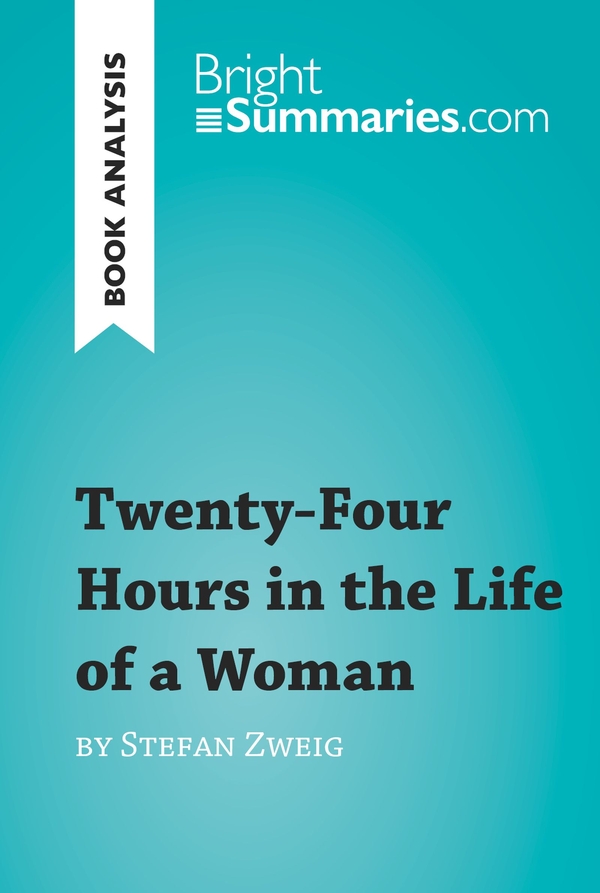Twenty-Four Hours in the Life of a Woman by Stefan Zweig (Book Analysis)
Twenty-Four Hours in the Life of a Woman by Stefan Zweig (Book Analysis)
Detailed Summary, Analysis and Reading Guide
Read more
This practical and insightful reading guide offers a complete summary and analysis of Twenty-Four Hours in the Life of a Woman by Stefan Zweig. It provides a thorough exploration of the novella’s plot, characters and main themes, along with an examination of Zweig’s acute psychological insight and narrative style. The clear and concise style makes for easy understanding, providing the perfect opportunity to improve your literary knowledge in no time.
This clear and detailed 25-page reading guide is structured as follows:
- Biography of Stefan Zweig
- Presentation of Twenty-Four Hours in the Life of a Woman
- Summary of Twenty-Four Hours in the Life of a Woman
- Character study
- Mrs C
- The Gambler
- The Narrator
- Analysis of Twenty-Four Hours in the Life of a Woman
- Psychological literature
- The role of the narrator
About Twenty-Four Hours in the Life of a Woman
The novella Twenty-Four Hours in the Life of a Woman first appeared in 1934, and was inspired by Constance Salme’s 19th-century epistolary novel Twenty-four Hours in the Life of a Sensitive Woman. It tells the story of a quiet guest house on the French Riviera which is shaken when one of the guests, a respectable young woman, runs away with a man who is not her husband. This event awakens a long-buried memory in an elderly woman, who recounts the events of a thrilling twenty-four hours in her youth to the narrator.
About Stefan Zweig
Stefan Zweig was an Austrian writer, playwright, journalist and biographer who enjoyed immense popularity across Europe and the United States during the first half of the 20th century. His writing stands out in particular for its profound humanism, simple style and close examination of psychology and human nature. His best-known works include The Royal Game, Twenty-Four Hours in the Life of a Woman and Confusion of Feelings. He fled Europe after Hitler’s rise to power, and his books were publicly burnt in Munich. He committed suicide in Brazil in 1942.
Product details
| ISBN | 9782806279149 |
|---|---|
| Publisher | Plurilingua Publishing |
| Collection | BrightSummaries.com |
| Format | |
| Pages | 25 |
| File size | 1.5 MB |







